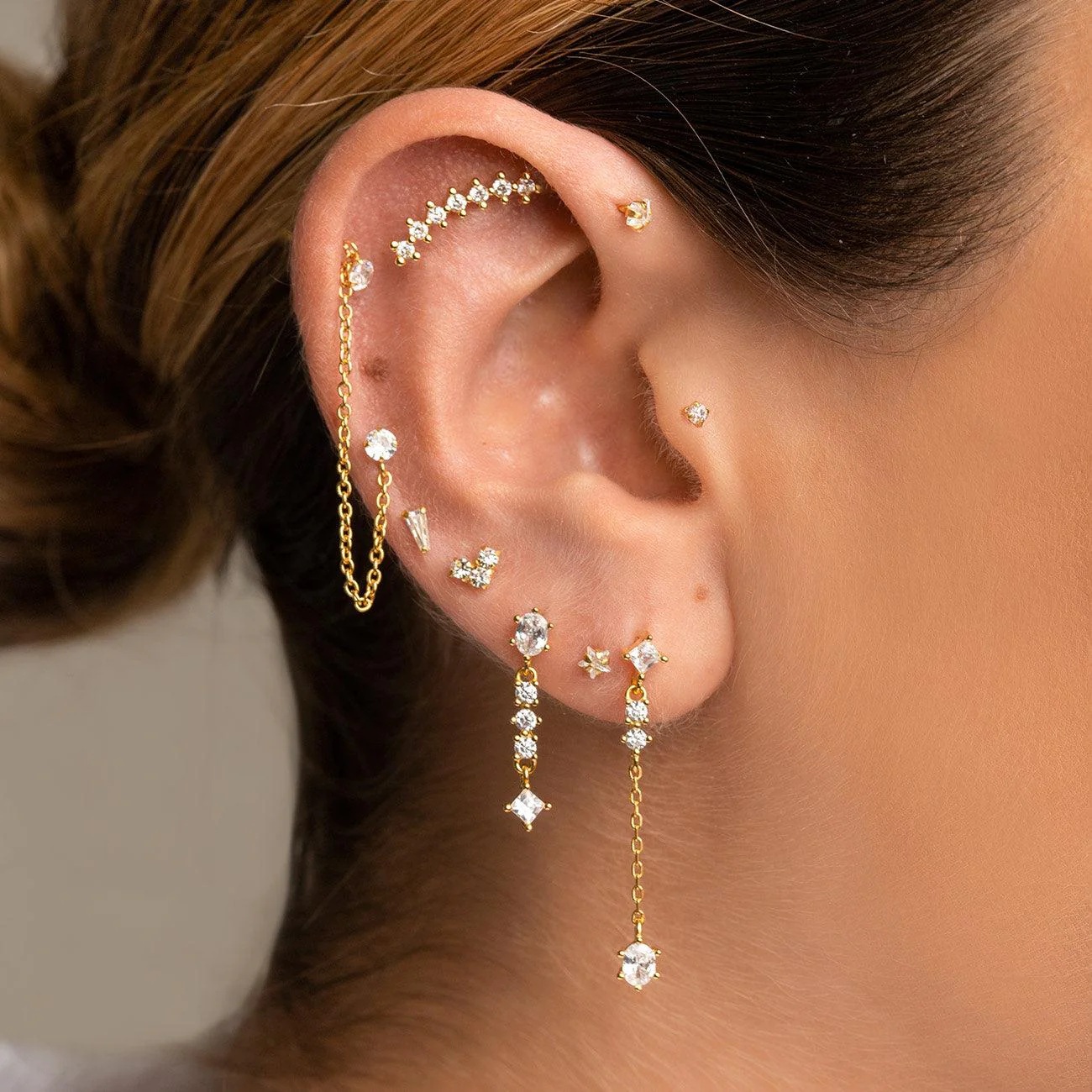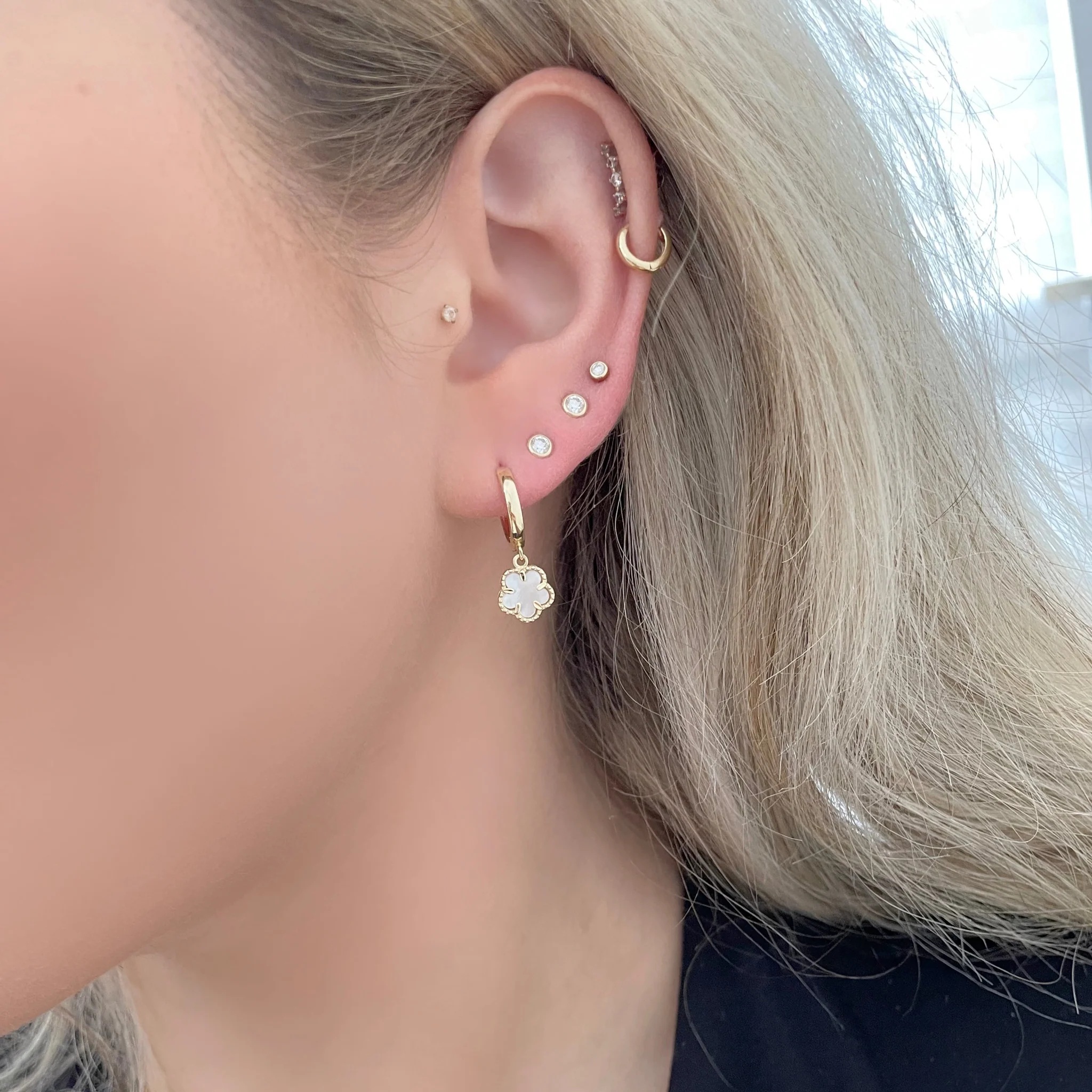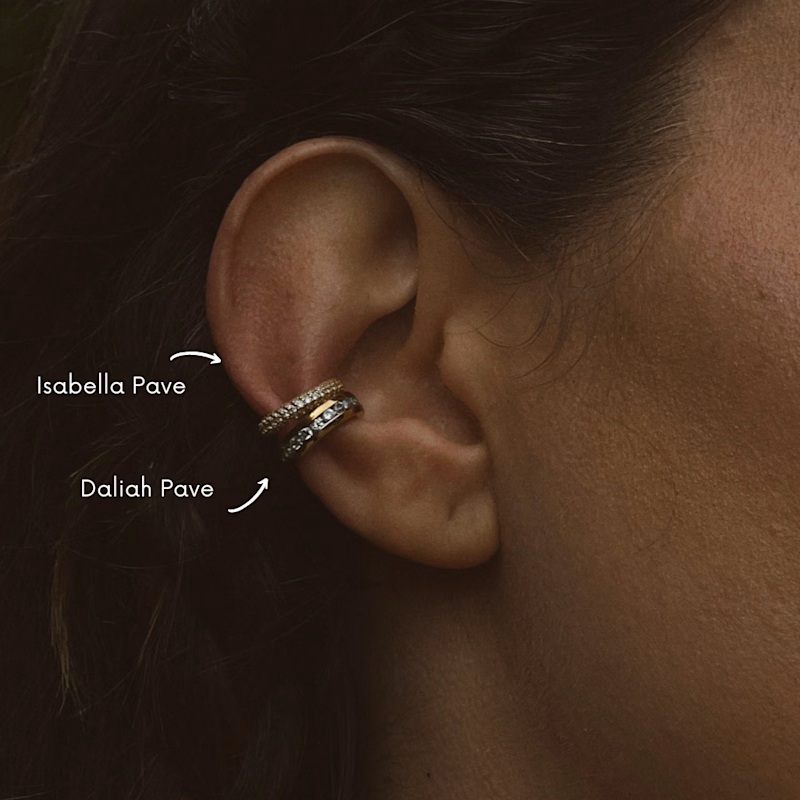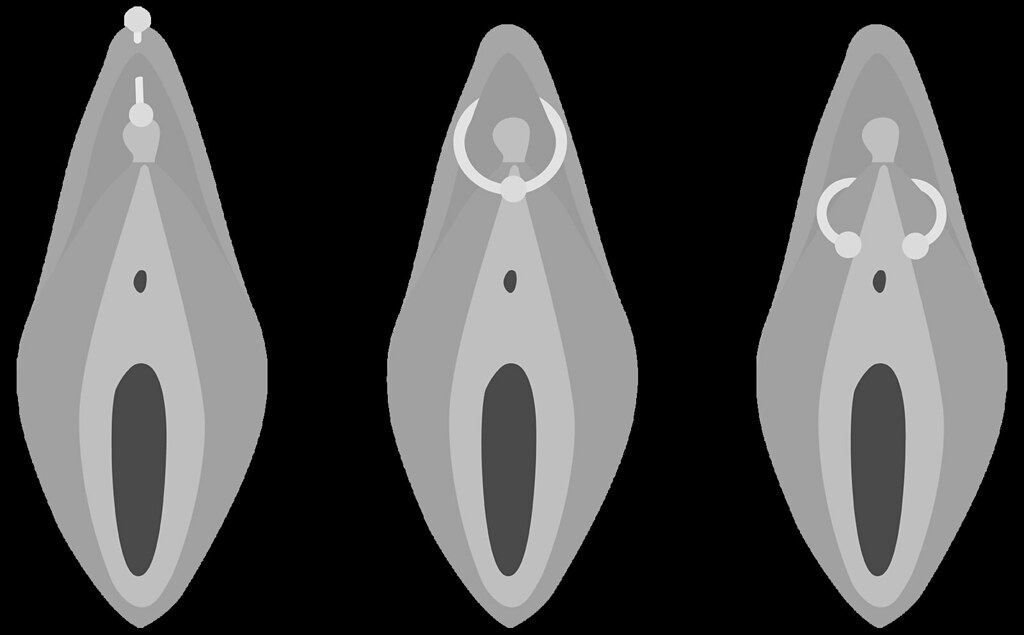In the world of advanced body modification, there are piercings that push aesthetic boundaries, and then there are those that dangerously break anatomical ones. The Isabella piercing is a legend in the piercing community, a name spoken with a mix of awe and extreme caution. It is a visually striking concept: a deep, vertical piercing that creates a line of jewellery along the pubic mound, seemingly connecting the area above the clitoris to the area just above the urethra. Its allure lies in its rarity and its audacious placement.
It is for this very reason that we must begin this guide with a clear, unwavering, and absolute statement of our professional and ethical policy: PinkTatPier does not, under any circumstances, perform the Isabella piercing. This is not a decision based on a lack of skill; it is a decision rooted in our profound commitment to the core tenet of our profession: “First, do no harm.”
We recently had a private consultation with a potential client who, through online forums, had become captivated by the idea of an Isabella piercing London. They came to us because of our reputation as experts in intimate piercings. The consultation was not about placement or jewellery; it was a compassionate, in-depth educational session. Our lead female specialist did not dismiss their interest. Instead, we sat down with anatomical charts and respectfully explained the precise, dangerous path the Isabella piercing takes. We detailed the critical nerve and vascular structures it endangers and the near-certainty of permanent, life-altering complications. We then shifted the conversation from what was unsafe to what was beautiful and safe. We worked with the client to design a stunning and viable alternative—a perfectly placed Vertical Clitoral Hood (VCH) piercing combined with a Christina piercing—that would create a similar elegant, vertical line of gems without any of the catastrophic risks. The client left our studio feeling not disappointed, but deeply grateful for the honesty and for being guided toward a choice that celebrated their body without endangering it.
This is the purpose of this guide. It is not a menu of services. It is a comprehensive, harm-reduction resource written from the perspective of London’s best specialists. Our goal is to explain why the Isabella is considered unacceptably dangerous by the world’s most reputable piercers and to empower you with the knowledge to choose beautiful, safe alternatives.

Isabella piercing
What is the Isabella Piercing? An Unflinching Look at the Anatomy at Risk
To understand why this piercing is so profoundly dangerous, you must understand the path it takes through some of the most sensitive and functionally critical anatomy of the human body.
The Definition: A Deep, High-Risk Vertical Channel
The Isabella is a deep, vertical piercing. On the surface, it appears as two beads: one sitting just below where a Christina piercing would be (on the pubic mound) and the other emerging just above the urethral opening. The channel connecting these two points, however, is what makes it so perilous. The jewellery—a long, straight or curved barbell—is forced to travel:
- Deeply underneath the clitoral hood.
- Directly through or underneath the clitoral shaft and the bundle of nerves it contains.
- Through the highly vascular corpus spongiosum tissue.
- In extremely close proximity to the urethra.
This is not a surface piercing. It is a deep, invasive procedure that traverses a landscape of vital neurological and sexual structures.
The Catastrophic and Potentially Lifelong Risks
The potential for complications is not a matter of “if,” but “when,” and the severity is profound.
- Permanent Nerve Damage and Total Loss of Sensation: This is the most significant and devastating risk. The piercing channel passes directly through the area containing the dorsal nerves of the clitoris. These are the primary nerves responsible for sexual sensation. Damaging these nerves can lead to partial or complete, irreversible numbness and a total loss of orgasmic function. This is a life-altering consequence.
- Excessive Bleeding (Hemorrhage): The clitoral structure is composed of erectile tissue with an extremely rich blood supply. The trauma of passing a needle through this area can cause severe, difficult-to-control bleeding.
- Urethral Damage and Complications: The proximity of the exit hole to the urethra creates a significant risk of damage to the urethral sponge, potentially leading to complications like urinary fistulas (an abnormal opening) or spraying.
- Guaranteed Rejection and Migration: Even if the initial procedure somehow avoids catastrophic nerve damage, the piercing is placed under immense, constant tension from the body’s natural structure. It has virtually no chance of healing successfully and will almost certainly migrate or reject, often causing significant and complex scarring in a highly sensitive area.
The Ethical Stance of a Professional Piercer: “First, Do No Harm”
In the professional piercing industry, expertise is defined not just by what a piercer can do, but by what they know they must not do.
Why the World’s Most Reputable Specialists Refuse This Piercing
There is an overwhelming consensus among the world’s most educated and reputable piercing organizations (such as the APP in the US and the UKAPP here in the UK) and their members: the Isabella piercing is an ethically indefensible procedure. The risks so profoundly outweigh any potential aesthetic benefit that performing it is considered a violation of a piercer’s fundamental duty to protect their client’s well-being. Any individual or studio willing to perform a Isabella piercing London is demonstrating a grave lack of anatomical knowledge, a disregard for client safety, or both.
The Philosophy of the PinkTatPier Team:
“Our profession exists at the intersection of art and medical procedure. The ‘art’ part allows us to be creative, but the ‘medical procedure’ part binds us to an ethical code that is absolute: First, do no harm. The Isabella piercing fundamentally violates this code. The potential for permanent, life-altering damage to a client’s sexual function is so high that performing it is, in our expert and unwavering opinion, an act of professional negligence. Our reputation as London’s best specialists is not built on our ability to perform every piercing imaginable, but on our wisdom and integrity to refuse the ones that can cause irreparable harm. Knowing what not to pierce is the most important knowledge we possess.”

Isabella piercing
Beautiful, Safe Alternatives: Achieving the Aesthetic Without the Devastating Risk
The desire for a vertical line of jewellery on the pubic mound is a beautiful aesthetic goal. The wonderful news is that this look can be achieved—or even improved upon—through a combination of beautiful, viable, and, most importantly, safe piercings.
The “Illusion” of an Isabella: The VCH and Christina Combination
For clients seeking that elegant, vertical line, we specialise in creating a stunning combination of two separate piercings:
- A Vertical Clitoral Hood (VCH) Piercing: This is a safe, fast-healing, and often pleasure-enhancing piercing that sits vertically at the top of the clitoral hood.
- A Christina Piercing: This is a decorative surface piercing that sits vertically at the top of the pubic cleft.
When a VCH piercing with a sparkling gem is combined with a Christina piercing placed above it, the result is a beautiful, sophisticated vertical line of two gems. This “illusion” provides the desired aesthetic of the Isabella piercing London with absolutely none of the risks to critical nerve structures. During a private consultation, we can assess your anatomy for both of these piercings and design a custom look for you.
Risk & Viability: A Clear Comparison
The difference in risk profile is not small; it is absolute.
Table: Risk & Viability Comparison: Isabella vs. Safe Alternatives
| Feature | The Isabella Piercing (Unsafe) | The VCH + Christina Combination (Safe Alternative) |
| Path of Piercing | Deep, invasive channel passing through/under the clitoral shaft and near the urethra. | Two separate, much shallower piercings placed in external skin folds and away from critical structures. |
| Risk of Nerve Damage | Extremely High / Unacceptable. This is the primary reason it is considered unethical. | Extremely Low / Negligible. Neither piercing interacts with the deep clitoral nerves. |
| Healing Potential | Extremely poor; long-term healing is virtually impossible, and rejection is almost guaranteed. | The VCH heals very quickly (4-8 weeks). The Christina is a challenging surface piercing but is viable and safe with the correct anatomy. |
| Aesthetic Result | A single, connected vertical bar. | A beautiful, elegant vertical line of two separate, sparkling gems. |
| Safety Verdict at PinkTatPier | NOT PERFORMED / UNETHICAL & DANGEROUS. | A SAFE AND BEAUTIFUL OPTION, subject to individual anatomical assessment. |
The Importance of a Private Consultation: Your Path to a Safe and Empowered Choice
We understand that curiosity about extreme piercings is natural. However, information found in online forums is often dangerously inaccurate or glorifies high-risk procedures without acknowledging the potential for lifelong consequences.
This is why a private consultation with a true professional is so vital. We encourage clients who are curious about the Isabella piercing London to book a consultation with our female specialists, not with the intention of getting it, but with the goal of receiving honest, expert, and compassionate information. This is your opportunity to:
- Have an open and non-judgemental discussion about your aesthetic goals.
- Receive a professional, respectful anatomical assessment.
- Learn about the beautiful and safe alternatives that will work with your body, not against it.
- Feel empowered to make the best and safest possible choice for your body.

Isabella piercing
Your 5 Most Important Questions Answered (FAQ)
1. I saw a picture of a “healed” Isabella online. Why can’t I get one?
The internet contains a great deal of misinformation. It is highly likely that the piercing seen was either very new (not healed), misidentified, or belonged to an individual with one-in-a-million anatomy who got incredibly lucky. The overwhelming majority of attempts at this piercing result in failure and scarring. A responsible specialist bases their practice on predictable, safe outcomes for all clients, not on rare, anecdotal exceptions.
2. Is there any safe way to perform an Isabella piercing?
No. The fundamental flaw of the Isabella is its path. The piercing, by its very definition, must traverse an area of critical neurological and vascular tissue. There is no “safe” way to create a channel through these structures. The risk of permanent damage is inherent to the piercing itself.
3. What is the difference in sensation between an Isabella and a safe alternative like the VCH?
The difference is night and day. A VCH piercing is specifically placed so that the bottom bead rests against the clitoris, and it is renowned for enhancing or increasing sexual sensation for the majority of wearers. The Isabella piercing, conversely, carries a high risk of damaging or destroying the nerves responsible for sexual sensation, potentially permanently.
4. Why would any piercer ever agree to do this piercing?
A piercer who agrees to perform an Isabella is demonstrating one of three things: a profound lack of anatomical knowledge, a reckless disregard for their client’s long-term well-being, or a lack of professional ethics. The world’s top-tier, most respected piercers will refuse to perform this procedure.
5. What if I still want it, even after hearing the risks?
As dedicated professionals committed to your safety, we will respectfully and unequivocally decline to perform the piercing. Our ethical duty to “do no harm” is our highest priority. We would be honoured, however, to work with you to find a stunning and safe alternative that you will love for years to come without risking your health.
Conclusion: Expertise is Knowing What Not to Do
The Isabella piercing will likely remain a legend in the piercing world—a cautionary tale spoken of in expert circles. True professional expertise is not defined by the ability to perform any piercing requested, but by possessing the deep wisdom, anatomical knowledge, and ethical integrity to refuse the ones that can cause irreparable harm. Your body is precious and deserves to be treated with the utmost respect.

Isabella piercing
Your Next Step: A Confidential Conversation About Safe Beauty
If you are exploring the world of intimate piercing, we urge you to empower yourself with knowledge and the guidance of a true expert.
Contact our London studio to book a private consultation with one of our best specialists. Let us have an honest conversation and help you explore the many beautiful, safe, and viable alternatives to the Isabella piercing that will celebrate your body without ever compromising its health

